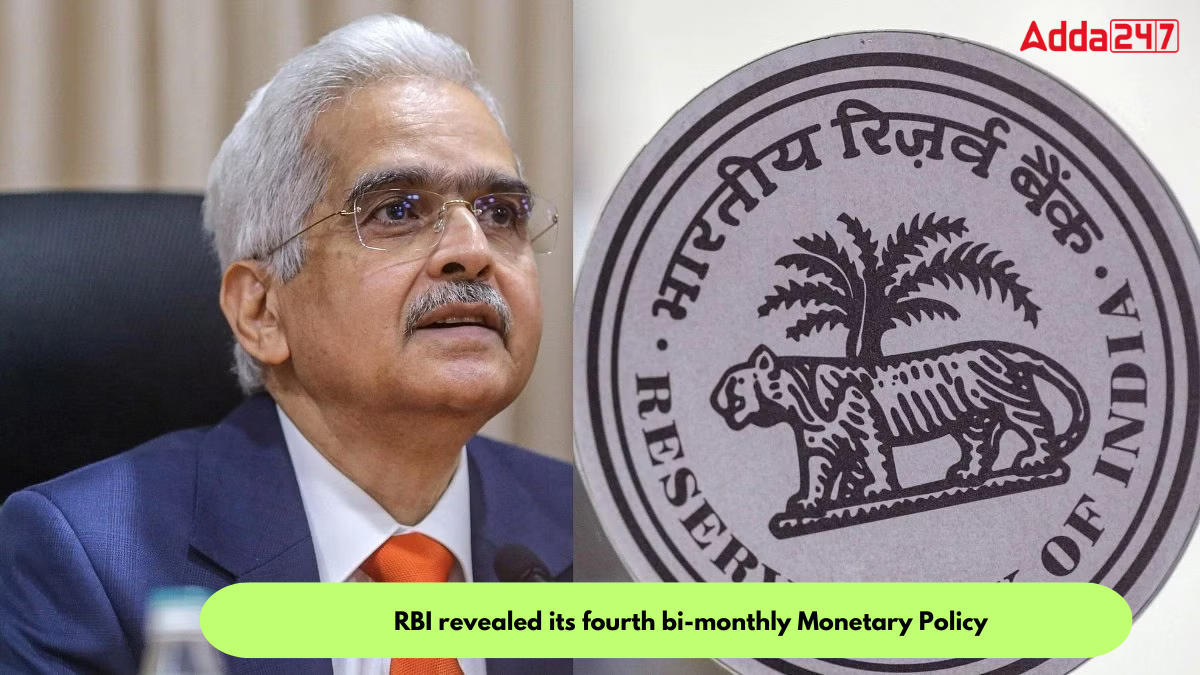The Reserve Bank of India (RBI) has revealed its fourth bi-monthly monetary policy on October 6. The Monetary Policy Committee (MPC), led by RBI Governor Shaktikanta Das, held a three-day meeting starting from October 4. The central bank has decided to maintain the repo rate at 6.50% and has adopted a stance of ‘withdrawal of accommodation.’
GDP growth forecast for FY24 unchanged at 6.5%
RBI kept GDP growth forecast for FY24 unchanged at 6.5%.
- Q2FY24 GDP growth forecast unchanged at 6.5%
- Q3FY24 unchanged at 6.0%
- Q4FY24 GDP growth forecast unchanged at 5.7%
- CPI inflation forecast for April-June 2024, or Q1FY25 unchanged at 6.6%
RBI Repo Rate are as under
- Policy Repo Rate: 6.50%
- Standing Deposit Facility (SDF): 6.25%
- Marginal Standing Facility Rate: 6.75%
- Bank Rate: 6.75%
- Fixed Reverse Repo Rate: 3.35%
- CRR: 4.50%
- SLR: 18.00%
MPC voted to remain focused on withdrawal of accommodation by 5 votes to 1.
The Composition of the MPC
Section 45ZB of the amended RBI Act, 1934, mandates the formation of an empowered six-member Monetary Policy Committee, officially constituted by the Central Government through notification in the Official Gazette. The inaugural MPC came into being on September 29, 2016.
Current MPC Members (As of October 5, 2020)
The Central Government, through an official Gazette notification dated October 5, 2020, appointed the following individuals as members of the MPC:
- Governor of the Reserve Bank of India (Chairperson, ex officio).
- Deputy Governor of the Reserve Bank of India, responsible for Monetary Policy (Member, ex officio).
- One officer of the Reserve Bank of India nominated by the Central Board (Member, ex officio).
- Prof. Ashima Goyal, Professor, Indira Gandhi Institute of Development Research (Member).
- Prof. Jayanth R. Varma, Professor, Indian Institute of Management, Ahmedabad (Member).
- Dr. Shashanka Bhide, Senior Advisor, National Council of Applied Economic Research, Delhi (Member).
(Note: Members 4 to 6 hold office for a period of four years or until further orders, whichever is earlier.)
The Role of MPC
Setting the Policy Repo Rate
The MPC is tasked with determining the policy repo rate, a crucial tool for achieving the inflation target set by the RBI.
Meeting Frequency and Quorum
The MPC convenes a minimum of four times annually, with a quorum of four members required for the meeting to proceed.
Voting and Decision-Making
Each member of the MPC holds one vote, and in cases of tied votes, the Governor possesses a casting vote. Furthermore, each member is required to provide a statement explaining their vote in favor of or against a proposed resolution.
Instruments of Monetary Policy
The RBI employs various direct and indirect instruments to implement its monetary policies, ensuring economic stability and liquidity management.
- Repo Rate
The repo rate is the interest rate at which the RBI provides liquidity under the Liquidity Adjustment Facility (LAF) to participants, with government and approved securities as collateral.
- Standing Deposit Facility (SDF) Rate
The SDF rate, positioned 25 basis points below the policy repo rate, is the rate at which the RBI accepts uncollateralized overnight deposits from LAF participants.
- Marginal Standing Facility (MSF) Rate
The MSF rate, set 25 basis points above the policy repo rate, allows banks to borrow from the RBI on an overnight basis, using their Statutory Liquidity Ratio (SLR) portfolio as collateral.
- Liquidity Adjustment Facility (LAF)
The LAF encompasses the RBI’s operations to inject or absorb liquidity from the banking system, utilizing various instruments such as repo/reverse repos, SDF, and MSF, along with other tools like open market operations (OMOs), forex swaps, and market stabilization schemes (MSS).
- LAF Corridor and Main Liquidity Management Tool
The LAF corridor, with the MSF rate as the upper limit and the SDF rate as the lower limit, employs the policy repo rate as the central rate. A 14-day term repo/reverse repo auction operation serves as the primary tool for managing frictional liquidity requirements.
- Fine Tuning Operations
To address unanticipated liquidity changes, the RBI conducts fine-tuning operations, including overnight and longer-term repo/reverse repo auctions.
- Reverse Repo Rate
The reverse repo rate is the interest rate at which the RBI absorbs liquidity from banks using eligible government securities as collateral.
- Bank Rate
The bank rate facilitates the purchase or rediscounting of bills of exchange and commercial papers by the RBI. It also serves as a penal rate for banks with shortfalls in meeting reserve requirements.
- Cash Reserve Ratio (CRR) and Statutory Liquidity Ratio (SLR)
CRR and SLR are reserve ratios banks are required to maintain with the RBI, contributing to liquidity control.
- Open Market Operations (OMOs)
OMOs involve the outright purchase/sale of government securities by the RBI to inject or absorb durable liquidity in the banking system.
Find More News on Economy Here



 Indian Olympic Medal Winners List Till N...
Indian Olympic Medal Winners List Till N...
 Who is the Inventor of the Gramophone?
Who is the Inventor of the Gramophone?
 HS Dhaliwal Appointed New DGP Of Andaman...
HS Dhaliwal Appointed New DGP Of Andaman...
